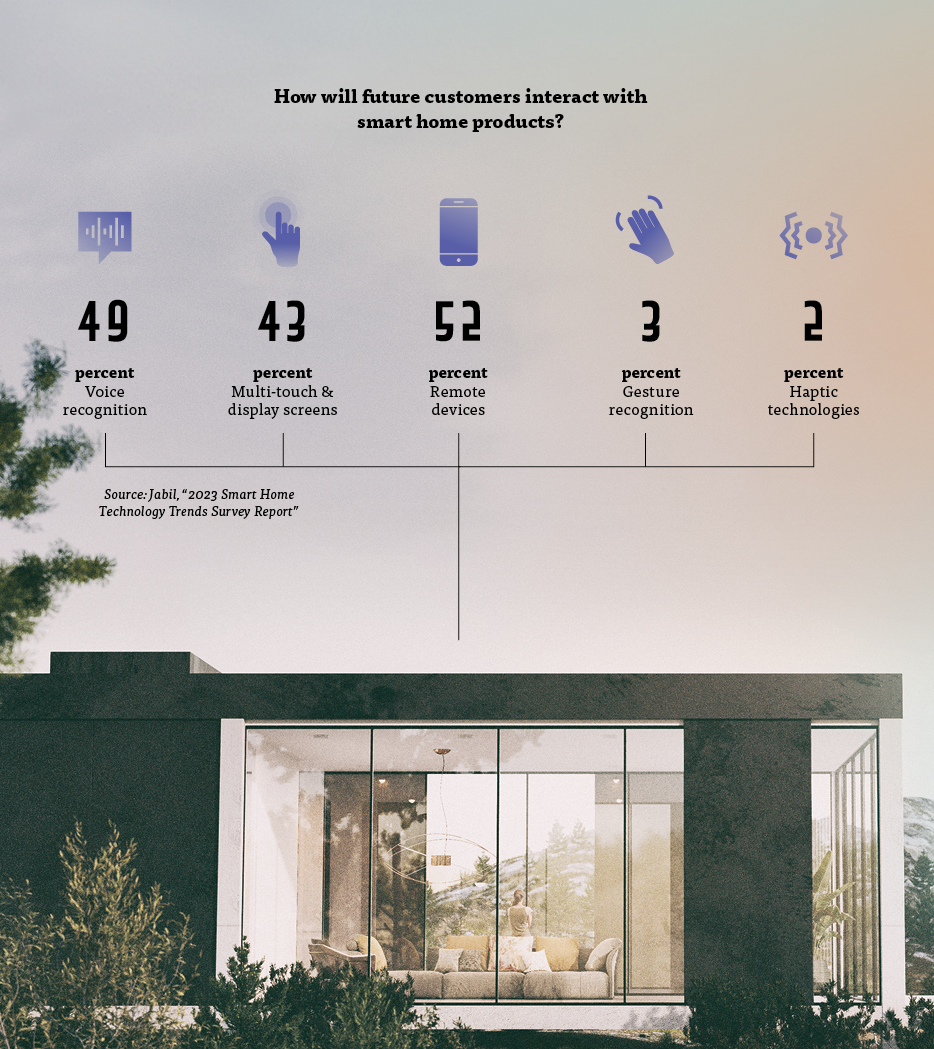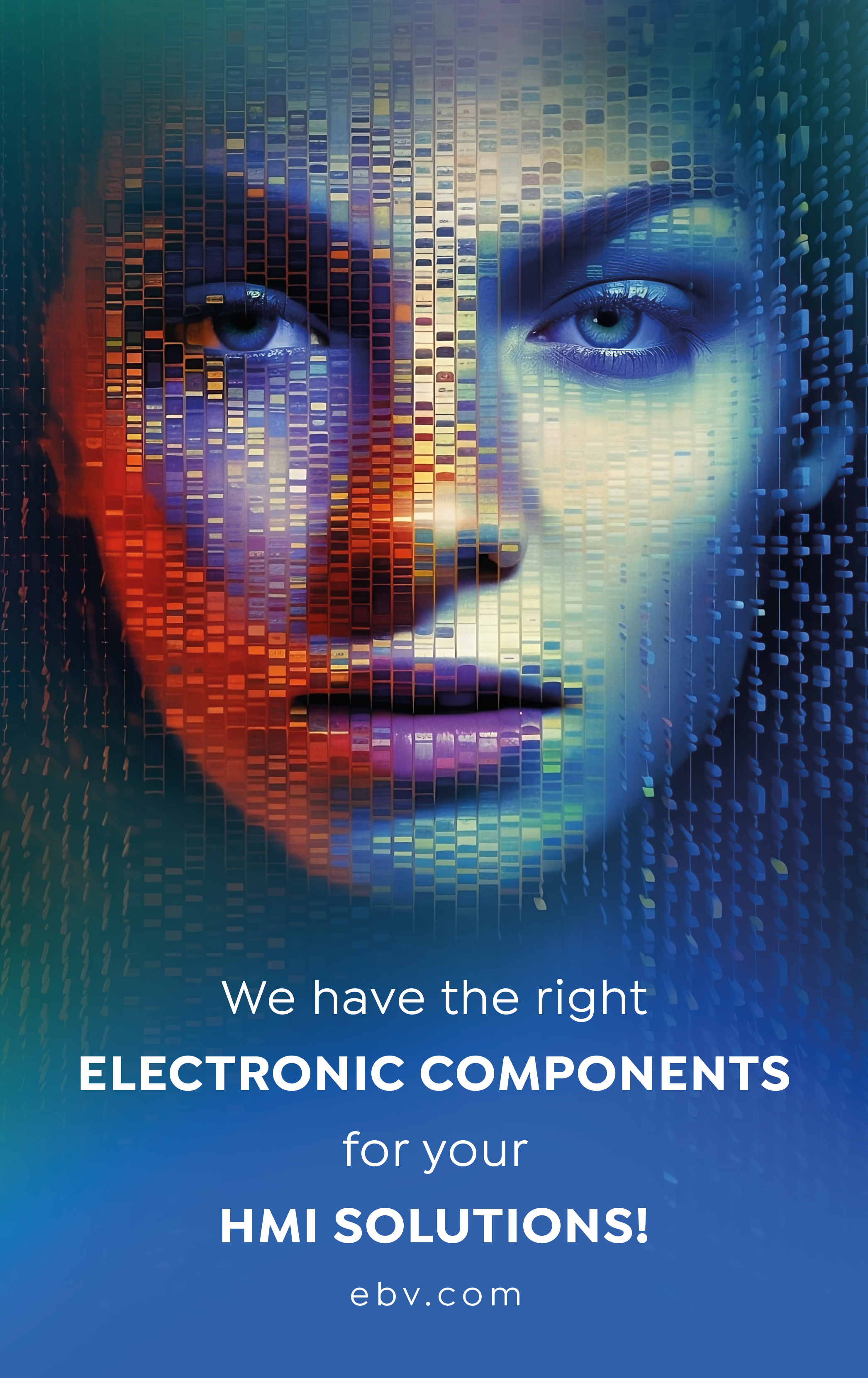Smart home applications make up a large part of the market for Human Machine Interfaces. The ultimate benchmark remains the kind of interaction offered by today’s smartphones.
Lights controlled by an app, a smart thermostat that automatically turns off the heating when a window is open, a vacuum cleaner robot that starts with a voice command: smart home devices have long been established, and the market is a booming billion-dollar business. Analysts from Brainy Insights estimate that the global smart home market will grow from 90 billion US dollars in 2022 to 657.41 billion U.S. dollars in 2032. This market is a key driver for Human Machine Interfaces – as HMIs are the crucial component in the intelligent home to seamlessly integrate smart home devices into the daily lives of residents.

HMIs as a success factor
The further development of HMIs and the functionalities associated with them are closely linked to the growing demand for smart home devices. In a survey conducted by the global contract manufacturer Jabil together with SIS International Research among 200 decision-makers for smart home solutions and devices, 39 percent stated that intuitive Human Machine Interfaces are the most important factor for the success of their smart home solution.
Multi-touch and screens
In the Jabil survey, 84 percent of respondents stated they currently use multi-touch and display screens in their smart home solution – the second most common response. Moreover, 43 percent expect their customers to continue using displays to interact with smart home solutions in the future. One study participant highlighted a particular advantage: “An intuitive touchscreen display, simple controls that facilitate use, and a thoughtful design ensure that [the device] is easy to clean and maintain.”
Voice command operation
Voice assistants like Google Home and Amazon Alexa have revolutionised the operation of intelligent devices at home. “The smart home has become the main area of application for the voice control of devices,” said Bitkom President Achim Berg already in 2022.
Systems like Alexa or Siri work over the cloud – which repeatedly raises concerns about data protection. The data leaves the smart home and could be used by third parties. Indeed, more than three-quarters (76 percent) of manufacturers in the Jabil survey stated that they use HMI interactions, such as voice commands, to collect data on their smart home solutions. Systems that process speech locally offer more data protection security: for instance, Peaknx building control has offline voice control from ProKNX, which operates independently without internet access in the configured operation. The spoken commands are only processed locally and do not leave the building. No recording takes place either. Thus, following the motto “What’s said at home, stays at home,” the privacy of residents is always preserved.
Holography is not science fiction
The COVID-19 pandemic triggered a massive demand for touchless HMIs that enable interactivity like a touchscreen without the risk of contamination. One of the most effective ways to achieve this is holographic projections. Corresponding HMIs create a holographic image of a control element by directing the content of a display through a special holographic plate. In addition to a deflection of angle, a convergent bundling of rays occurs there, creating a virtual image floating freely in space. An infrared touch sensor is mounted below the virtual image. Its beam path is interrupted when the image is “touched”. The interruption is evaluated as a touch event. While manufacturers of public touchpoints are already using holographic HMIs for “germ-free” contactless operation, applications for the smart home are still in the development stage – for example for coffee machines or intelligent fitness equipment. Nevertheless, already four percent of the participants in the Jabil survey are using holograms in their HMI solutions.
Gesture control in low demand
As with holographic HMIs, COVID-19 has significantly increased the demand for solutions with gesture recognition. Just over a third of the participants in the Jabil survey currently use this technology for their HMIs. However, only three percent of them expect their customers to continue using gesture recognition to interact with their products in the future. However, facial recognition and eye-tracking solutions could gain market share in smart home HMIs. Such solutions could, among other things, improve the accessibility of smart home devices for people with mobility or speech disabilities – one could simply look at a control panel to change the temperature of a room or the volume of the television instead of using a remote control or giving a command.
Modern remote control
However, the most important HMI in the smart home is still the smartphone: according to Bitkom, 85 percent of people in Germany control their smart home applications and devices via a smartphone app, 20 percent via remote control. In the future, wearables will also be used to control smart home devices, which is also what the manufacturers surveyed in the Jabil study expect. Devices such as smartwatches or fitness trackers could, for example, send a signal to the smart home network as soon as the resident enters their home, in order to automatically activate the lights, heating or television.

